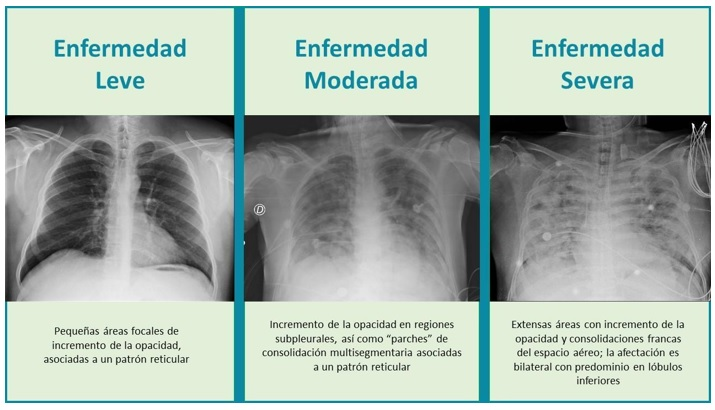Abstract
Nausea and vomiting (NaV) are two of the adverse effects frequently associated
with the administration of chemotherapy in addition to other drugs used in
hematology. The importance that the prevention and management of these
symptoms has in our patients, lies in the risks they represent when they are not
treated correctly, such as: dehydration, hydroelectrolytic disorders and acute renal
failure. For the preparation of this article, a review of the literature was carried out
based on the evidence and available schemes for the prevention and treatment of
NV induced by medications used in the management of patients with hematological
pathologies.
Clark-Snow, R., Affronti, M. L., & Rittenberg, C. N. (2018). Chemotherapy-induced nausea and vomiting (CINV) and adherence to antiemetic guidelines: results of a survey of oncology nurses. Supportive care in cancer : official journal of the Multinational Association of Supportive Care in Cancer, 26(2), 557–564. https://doi.org/10.1007/s00520-017-3866-6
Ferretiz López, G., Cuéllar Guzmán, L. F., & Cárdenas Herrera, N. (2020). Clasificación y tratamiento de náusea y vómito postoperatorio en el paciente oncológico sometido a cirugía. Revista Chilena de Anestesia, 49(2), 223-236. https://doi.org/10.25237/revchilanestv49n02.07
Singh, P., Yoon, S. S., & Kuo, B. (2016). Nausea: a review of pathophysiology and therapeutics. Therapeutic advances in gastroenterology, 9(1), 98–112. https://doi.org/10.1177/1756283X15618131
Veiga-Gil, L., Pueyo, J., & López-Olaondo, L. (2017). Náuseas y vómitos postoperatorios: fisiopatología, factores de riesgo, profilaxis y tratamiento. Revista Española de Anestesiología y Reanimación, 64(4), 223-232. https://doi.org/10.1016/j.redar.2016.10.001
Aapro M. (2018). CINV: still troubling patients after all these years. Supportive care in cancer : official journal of the Multinational Association of Supportive Care in Cancer, 26(Suppl 1), 5–9. https://doi.org/10.1007/s00520-018-4131-3
Alamri, A., Alawlah, Y. A., Qiao, Y., & Wang, J. (2018). A retrospective review of treatment patterns of antiemetic agents for chemotherapy-induced nausea and vomiting. SAGE open medicine, 6, 2050312118767234. https://doi.org/10.1177/2050312118767234
Hesketh Paul J, Kris Mark G, Basch Ethan, Bohlke Kari, Barbour Sally Y, Clark-Snow Rebecca Anne, Danso Michael A, Dennis Kristopher, Dupuis L Lee, Dusetzina Stacie B, Eng Cathy, Feyer Petra C, Jordan Karin, Noonan Kimberly, Sparacio Dee, Somerfield Mark R, Lyman Gary H. Antiemetics: American Society of Clinical Oncology Clinical Practice Guideline Update. Journal of clinical oncology : official journal of the American Society of Clinical Oncology. 2017;35:3240–3261.
Vaid, A. K., Gupta, S., Doval, D. C., Agarwal, S., Nag, S., Patil, P., Goswami, C., Ostwal, V., Bhagat, S., Patil, S., & Barkate, H. (2020). Expert Consensus on Effective Management of Chemotherapy-Induced Nausea and Vomiting: An Indian Perspective. Frontiers in oncology, 10, 400. https://doi.org/10.3389/fonc.2020.00400
Viale P. H. (2018). Chemotherapy-Induced Nausea and Vomiting: Updates and Recommendations. Journal of the advanced practitioner in oncology, 9(2), 150–152.
Jordan K, Blättermann L, Hinke A, Müller-Tidow C, Jahn F. Is the addition of a neurokinin-1 receptor antagonist beneficial in moderately emetogenic chemotherapy?-a systematic review and meta-analysis. Support Care Cancer. 2018;26(1):21-32. doi:10.1007/s00520-017-3857-7
Masiongale AJ, Garvin JT, Murphy MJ, et al. Reexamining Metoclopramide's Role in the Prevention of Postoperative Nausea and Vomiting: A Secondary Analysis. AANA J. 2018;86(3):213-219.
Rasheed, M. A., Sarkar, A., & Arora, V. (2019). Evaluation of Efficacy of Metoclopramide, Dexamethasone and Their Combination for the Prevention of Postoperative Nausea and Vomiting (PONV) in Patients Undergoing Cesarean Section. Anesthesia and Critical Care, 01(01), 1-9. https://doi.org/10.26502/acc.001
Hesketh, P. J., Aapro, M., Jordan, K., Schwartzberg, L., Bosnjak, S., & Rugo, H. (2015). A Review of NEPA, a Novel Fixed Antiemetic Combination with the Potential for Enhancing Guideline Adherence and Improving Control of Chemotherapy-Induced Nausea and Vomiting. BioMed research international, 2015, 651879. https://doi.org/10.1155/2015/651879
Umar, R. M. (2018). Drug-drug interactions between antiemetics used in cancer patients. Journal of Oncological Sciences, 4(3), 142-146. https://doi.org/10.1016/j.jons.2018.07.003
Roila, F., Molassiotis, A., Herrstedt, J., Aapro, M., Gralla, R. J., Bruera, E., van der Wetering, M. (2016). 2016 MASCC and ESMO guideline update for the prevention of chemotherapy- and radiotherapy-induced nausea and vomiting and of nausea and vomiting in advanced cancer patients. Annals of Oncology, 27, v119-v133. https://doi.org/10.1093/annonc/mdw270

This work is licensed under a Creative Commons Attribution 4.0 International License.
Copyright (c) 2021 JHON ALEXANDER AVILA RUEDA, Nicolás Flegler, Karla Oliveros, Sofía Rivarola, Agustín Montes, Mariano De Muria, Cecilia Sernaque, Ana Milena Cantillo, Matías Carreras, Luis Zapata, Silvina Palmer


